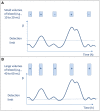How to Optimize the Use of Blood Cultures for the Diagnosis of Bloodstream Infections? A State-of-the Art
- PMID: 27242721
- PMCID: PMC4863885
- DOI: 10.3389/fmicb.2016.00697
How to Optimize the Use of Blood Cultures for the Diagnosis of Bloodstream Infections? A State-of-the Art
Abstract
Bloodstream infection (BSI) is a major cause of death in developed countries and the detection of microorganisms is essential in managing patients. Despite major progress has been made to improve identification of microorganisms, blood culture (BC) remains the gold standard and the first line tool for detecting BSIs. Consensus guidelines are available to ensure optimal BSI procedures, but BC practices often deviate from the recommendations. This review provides an update on clinical and technical issues related to blood collection and to BC performance, with a special focus on the blood sample strategy to optimize the sensitivity and specificity of BCs.
Keywords: blood culture; bloodstream infection; contamination; multi-sampling strategy; sensitivity; single sampling strategy; specificity.
Figures

References
-
- Accoceberry I., Cornet M., Fenollar F., Mainardi J. L. (2015b). Endocardite, in REMIC, Référentiel en Microbiologie Médicale, 5th Edn., eds Bourlet T., Courcol R., Laudat P., Herrmann J. L., Lachaud L., Lamy B., Peigue-Lafeuille H., Pangon B. (Paris: Société française de Microbiologie; ), 139–144.
-
- Accoceberry I., Cornet M., Lamy B. (2015a). Hémoculture, in REMIC, Référentiel en Microbiologie Médicale, 5th Edn., eds Bourlet T., Courcol R., Laudat P., Herrmann J. L., Lachaud L., Lamy B., Peigue-Lafeuille H., Pangon B. (Paris: Société française de Microbiologie; ), 125–137.
-
- Arendrup M., Jensen I. P., Justesen T. (1996). Diagnosing bacteremia at a Danish hospital using one early large blood volume for culture. Scand. J. Infect. Dis. 28, 609–614. - PubMed
Publication types
LinkOut - more resources
Full Text Sources
Other Literature Sources
Medical

